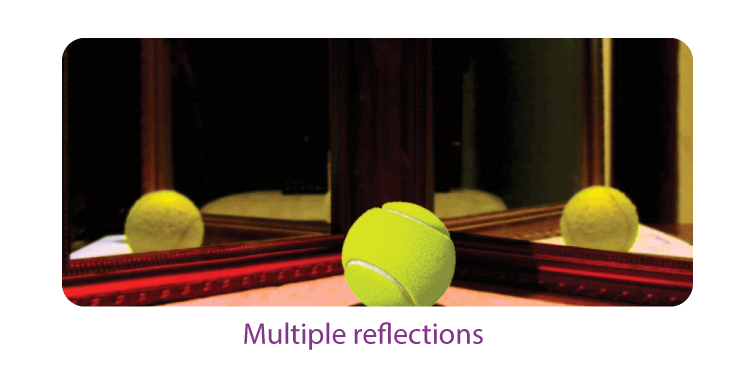Chapter 16: Light Part 1 Class 8 Science
Chapter 16: Light Class 8th Science
Introduction to Light
The world as we know is largely known through senses and the sense of sight is one of the most important senses. It is only when the light from an object enters our eyes that we see it. The light might have been either emitted by the object or reflected by it. Some of the important terminologies related to light are:
Light is the energy that enables us to see. Light is emitted from a source such as the Sun. The word usually refers to visible light, which is visible to the human eye and is responsible for the sense of sight.
How do we see objects?
Our eyes alone do not allow us to see. Light from a source falls on an object and then bounces off onto our eyes and that is how we perceive it.


Ray diagram
The path taken by a narrow beam of light is depicted as a ray diagram.

Regular and Diffused Reflection
Regular and diffused reflection
Reflection from a smooth surface like a mirror that follows the laws of reflection is called as regular reflection.

Image formation in a plane mirror
- The image formed by a plane mirror is always virtual, erect and object and image are equidistant from the mirror.
- The image formed in a plane mirror undergoes lateral inversion.

Difference between the real and virtual image
A real image is formed by the actual convergence of light rays. In optics, a virtual image is an image formed when the outgoing rays from a point on an object always diverge. The image appears to be located at the point of apparent divergence. Because the rays never really converge, a virtual image cannot be projected onto a screen.
Multiple reflections
- Two mirrors inclined to each other give multiple images, due to multiple reflections.
- When an object is kept between two parallel plane mirrors, infinite images are formed.

Calculating the total number of images
Number of images formed by plane mirrors is given by n=(360∘/θ)−1.
Dispersion
Dispersion of light
- The splitting of light into its component colours is called as dispersion.
- Example: Rainbow

Human Eye
Human Eye
The human eye is a spherically shaped sense organ(diameter about 2.3 cm) that gives the sense of sight and helps us perceive colours and depth.
Functions of different organs in the human eye
- Light enters the eye through a thin membrane that forms a transparent bulge on the front of the eye, called as the cornea.
- Iris is a dark muscular diaphragm that controls the size of the pupil.
- The pupil is the small opening in the centre of the iris.
- The lens which is behind the pupil helps to adjust the focal length required to clearly focus on objects at various distances.
- The retina is the screen where the images get formed. It is a delicate membrane with a large number of photosensitive cells called rods and cones.
- Cones are sensitive to bright light and rods are sensitive to dim light.
- The optic nerve transmits the electrical signals from the eye to the brain.

Visual Defects
Visual defects
- Visual defects include the inability to see near objects, or the inability to see far objects.
- In old people the lens becomes cloudy, a condition called cataract that impairs vision.
Seeing Sans Eyes
Braille system
- Braille is a system to read and write for visually impaired people.
- Consists of 63 dot patterns or characters.
- These patterns are embossed in braille sheets that can be recognized on touch.
- The dots are raised in order to make it easier to touch.